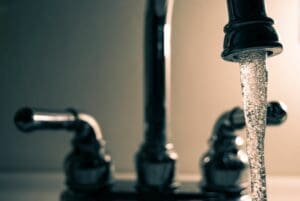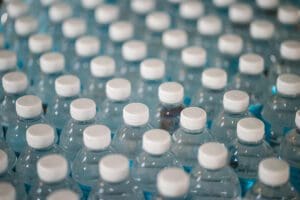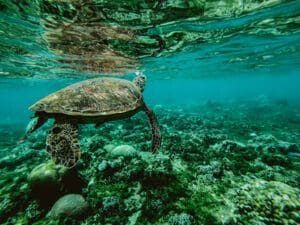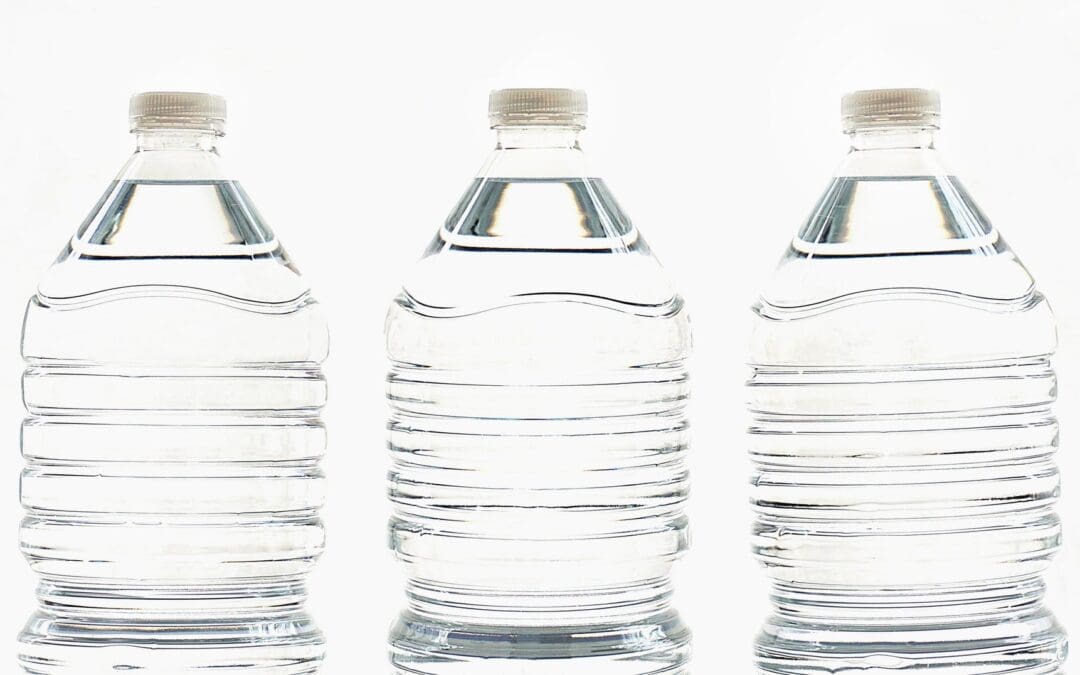Why do we find so much plastic in tap and bottled water? Plastic doesn’t readily biodegrade- it only disintegrates into smaller and smaller pieces, releasing chemicals at each step of the way to your tap and bottled water.
Plastic is Forever
“Roughly two-thirds of all plastic ever produced has been released into the environment and remains there in some form—as debris in the oceans, as micro- or nanoparticles in air and agricultural soils, as microfibers in water supplies, or as microparticles in the human body.”
Ongoing Environmental Exposure means that tiny plastic particles have accumulated in our soil, fish, and even in tap water. These small plastic particles, known as microplastics, make their way into water sources, all the way to our tap water. Microplastics range in size from .33mm to 5mm in size.
Bottled water has been shown to contain double the amount of plastic than tap water. Plastic can leech from the bottle directly into the water resulting in higher levels of plastic particles in bottled water.
Microplastics in Tap & Bottled Water
Orb Media’s recent study conducted by Fredonia State University of New York, “Drinking Water as a Source of Human Exposure to Microplastics,” analyzed both tap and bottled water from a wide variety of sources. They tested for different types of plastic, microfibers, and microplastics.
Plastic Fibers in Tap Water 
The study analyzed:
- 159 samples of tap water
- 14 countries tested
- 81% contained plastic particles
- The US had the highest average tested of 9.24 particles per liter
- 98% of particles were fibers which come from disintegrated clothing and other plastic products.
Micro Plastics in Bottled Water
Orb Media followed up with a study on bottled water which showed twice double the amount of plastic per liter in bottled water as compared to levels in tap water.
The study analyzed:
-
- 259 bottles
- 19 locations
- 11 leading brands
- 93% of samples showed microplastics
- Bottled water has an average of 10.4 plastic particles per liter, nearly double the average of the tap water study.
- 13% of plastic particles were microfibers
- 87% of plastic particles were microplastics
Where are microplastics in bottled water coming from?
 Bottled water samples contained plastics made from polymeric material, which is the most common plastic used to make bottle caps. Other types found were polypropylene, nylon, and PET. PET is commonly used in single use water bottles. The study’s authors suggest that this indicates plastic found in bottled water comes from a different source than plastic found in tap water, and is likely related to packaging.
Bottled water samples contained plastics made from polymeric material, which is the most common plastic used to make bottle caps. Other types found were polypropylene, nylon, and PET. PET is commonly used in single use water bottles. The study’s authors suggest that this indicates plastic found in bottled water comes from a different source than plastic found in tap water, and is likely related to packaging.
For more on the impact of plastic packaging on our water and food, please refer to Part 3: Food and Beverage Packaging.
#BYOBottle & Purified Water
FreshPure® Waters presents a sustainable, microplastic-free solution to tap and bottled water. Our 5-6 step purification process ensures that the water that you and your family drink is plastic free. Storing water in glass or reusable plastic bottles for short periods of time (bottled water commonly remains in transit or on the shelf for months) prevents leaching and keeps single-use plastic out of the waste stream and out of your drinking water. By switching to bulk water, you become part of the environmental solution, and avoid ingesting unnecessary plastic.

